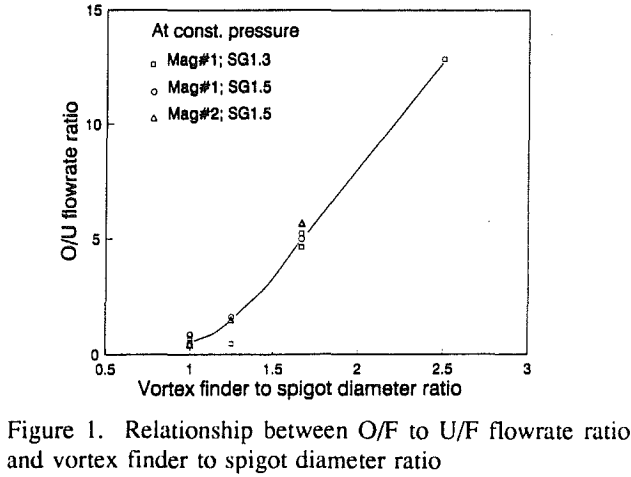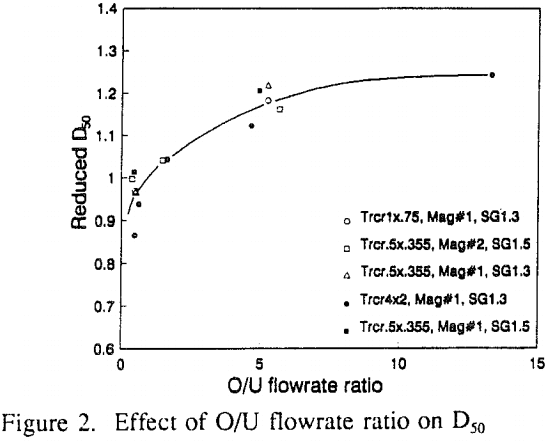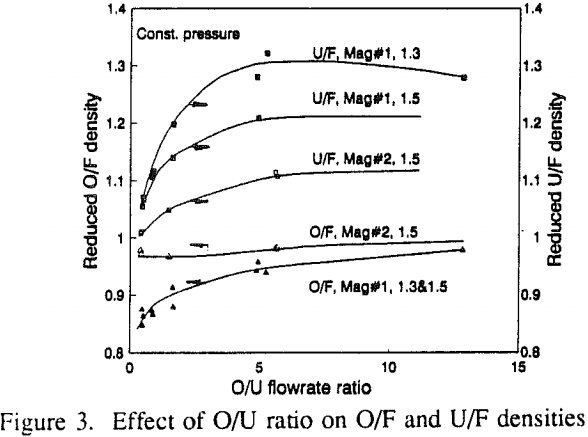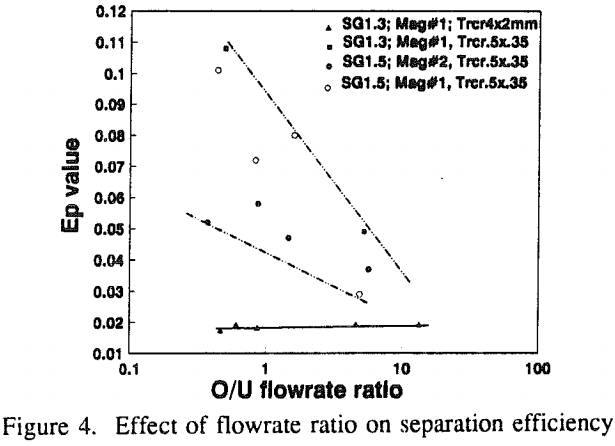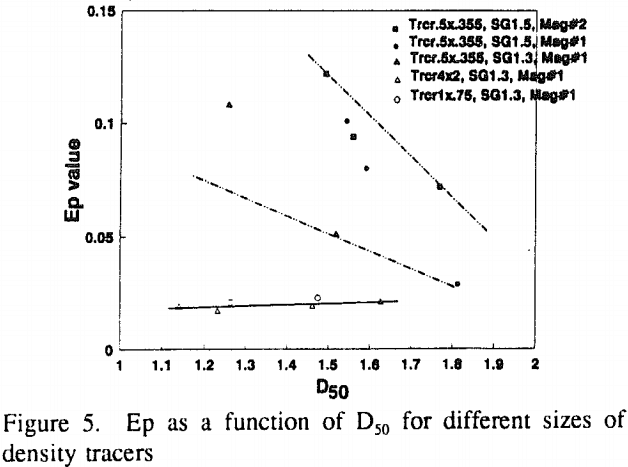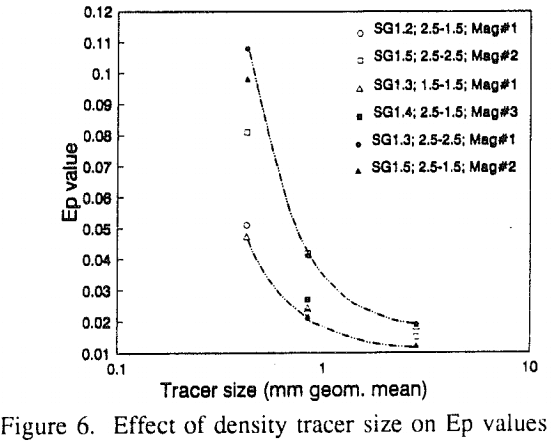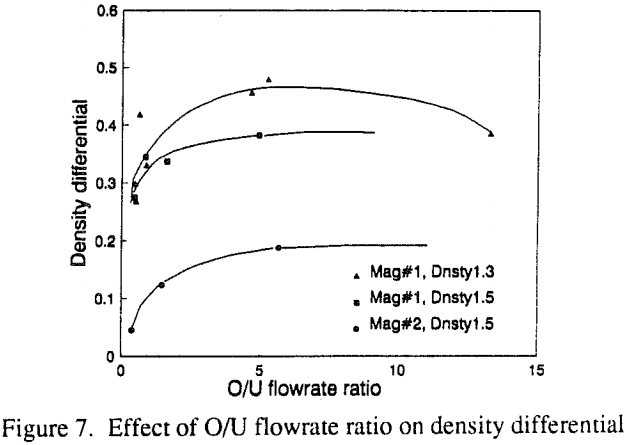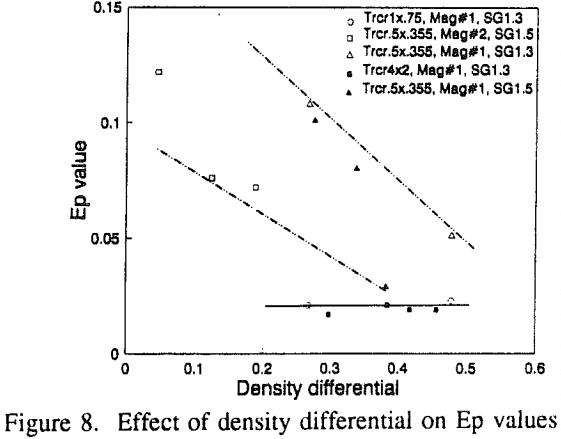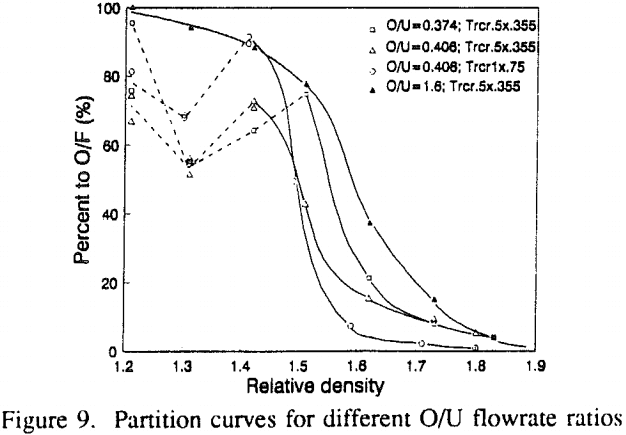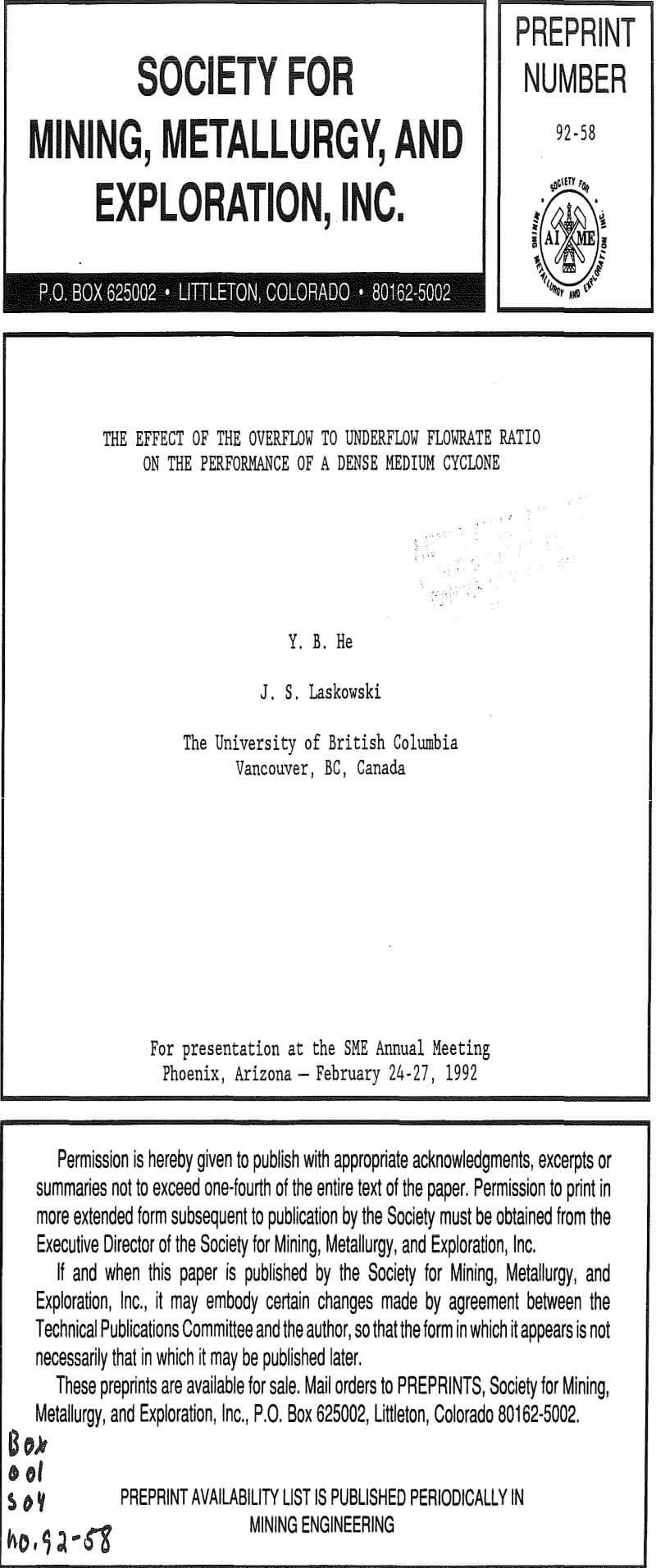In the dense medium cyclone separation of coal, the overflow to underflow (O/U) flowrate ratio has not been considered as a major parameter in correlation with the cyclone performance, since it is not directly adjustable. It is a common practice in the optimization of cyclone performance, however, to stipulate the range of cyclone orifice diameter ratios in respect to the cyclone diameter and to manipulate the cyclone orifice diameters individually in search of the optimum point.
Materials and Experimental
The magnetite sample (Mag 1) used to prepare the dense medium was received from Craigmont Mines, B.C., Canada. A finer magnetite sample (Mag 2) was prepared by grinding Mag 1 in a 19×13″ ball mill. The particle size distribution of both magnetite samples could be described by the Rosin-Rammler-Bennet (RRB) distribution.
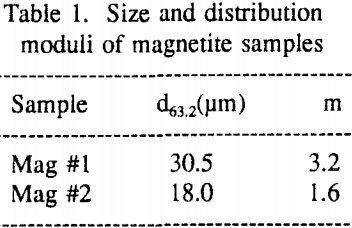
The medium densities of overflow and underflow were measured regularly using a direct-reading density scale. Two sampling boxes with equal volume (23 litres) inside the pump sump were employed for overflow and underflow flowrate measurements. The time spans for filling up the boxes were measured to calculate the flowrates.
Results and Discussion
The correlation between the O/U flowrate ratio and vortex finder to spigot diameter ratio under fixed inlet pressure (60.4″) was basically independent of medium density and magnetite particle size over the tested range.
The separation cut point, D50, of a dense medium cyclone is essentially determined by the medium density. With constant medium density, however, D50 becomes a function of the O/U flowrate ratio.
Results show that, irrespective of the tracer particle size, magnetite particle size, and medium density, the normalized D50 values for different sizes of density tracers all exhibited a similar increasing pattern with the O/U flowrate ratio. This effect may provide, in addition to the medium density, another adjustable parameter to control D50. Raising D50 by means of increasing the O/U flowrate ratio (instead of increasing the medium density) may avoid the dilemma of increasing medium viscosity.
Maintaining similar D50’s for all the size fractions of the feed is usually desirable since this would increase the overall separation efficiency. Nevertheless, an increase in D50 or in cut point shift (which is defined as the difference between densities of D50 and cyclone feed medium) is normally observed when particle size is decreased.
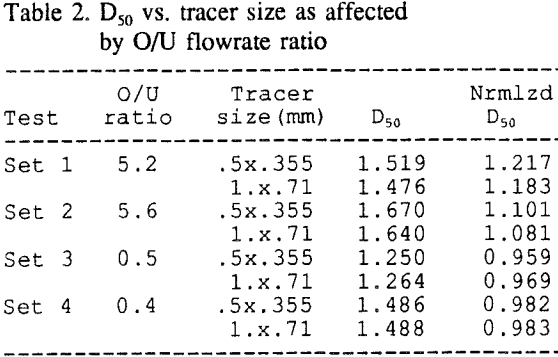
The Ep value for coarse density tracers (4.0×2.0 mm) was essentially independent of the O/U flowrate ratio and all the values fall in the neighbourhood of 0.019. However, the Ep values for fine density tracers (0.5×0.35 mm) were affected by the O/U flowrate ratio. The Ep value tended to decrease with an increase in O/U flowrate ratio.
The medium density differential, defined as the difference between underflow and overflow densities is used as a measure of the dense medium stability. A higher density differential is generally considered to be unfavourable to cyclone performance and may result in a lower separation efficiency. The density differential is affected by the medium composition as well as by the O/U flowrate ratio.
